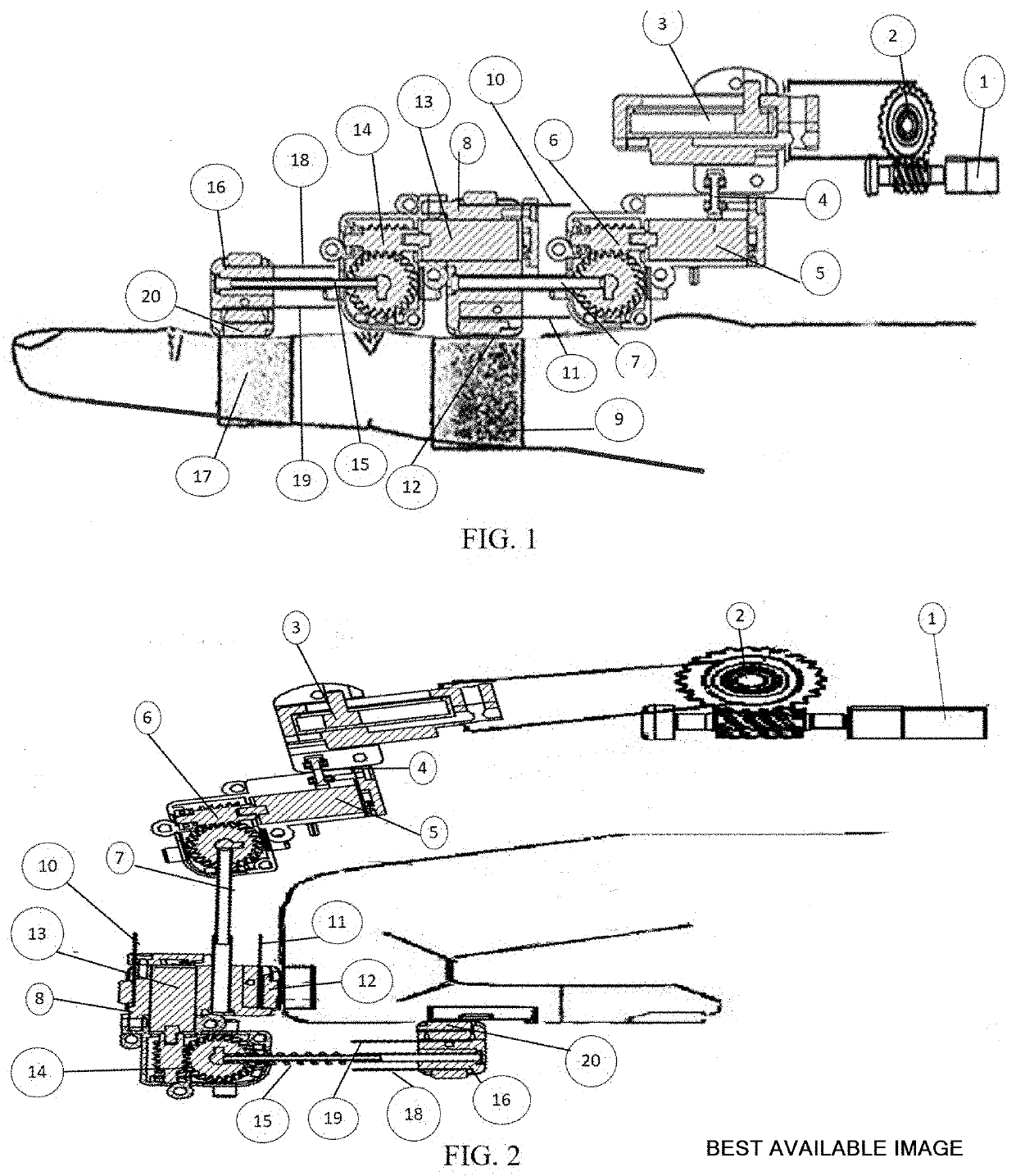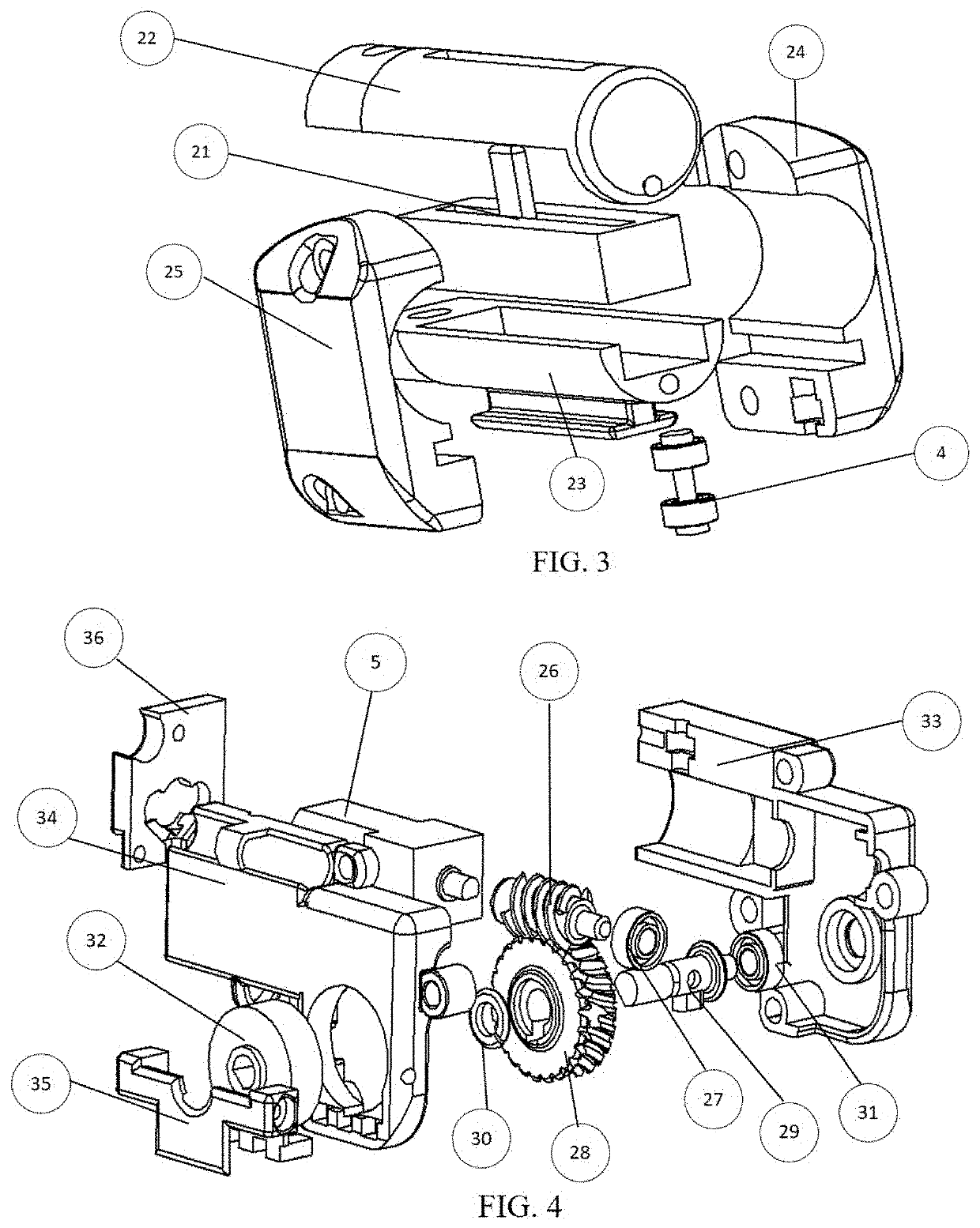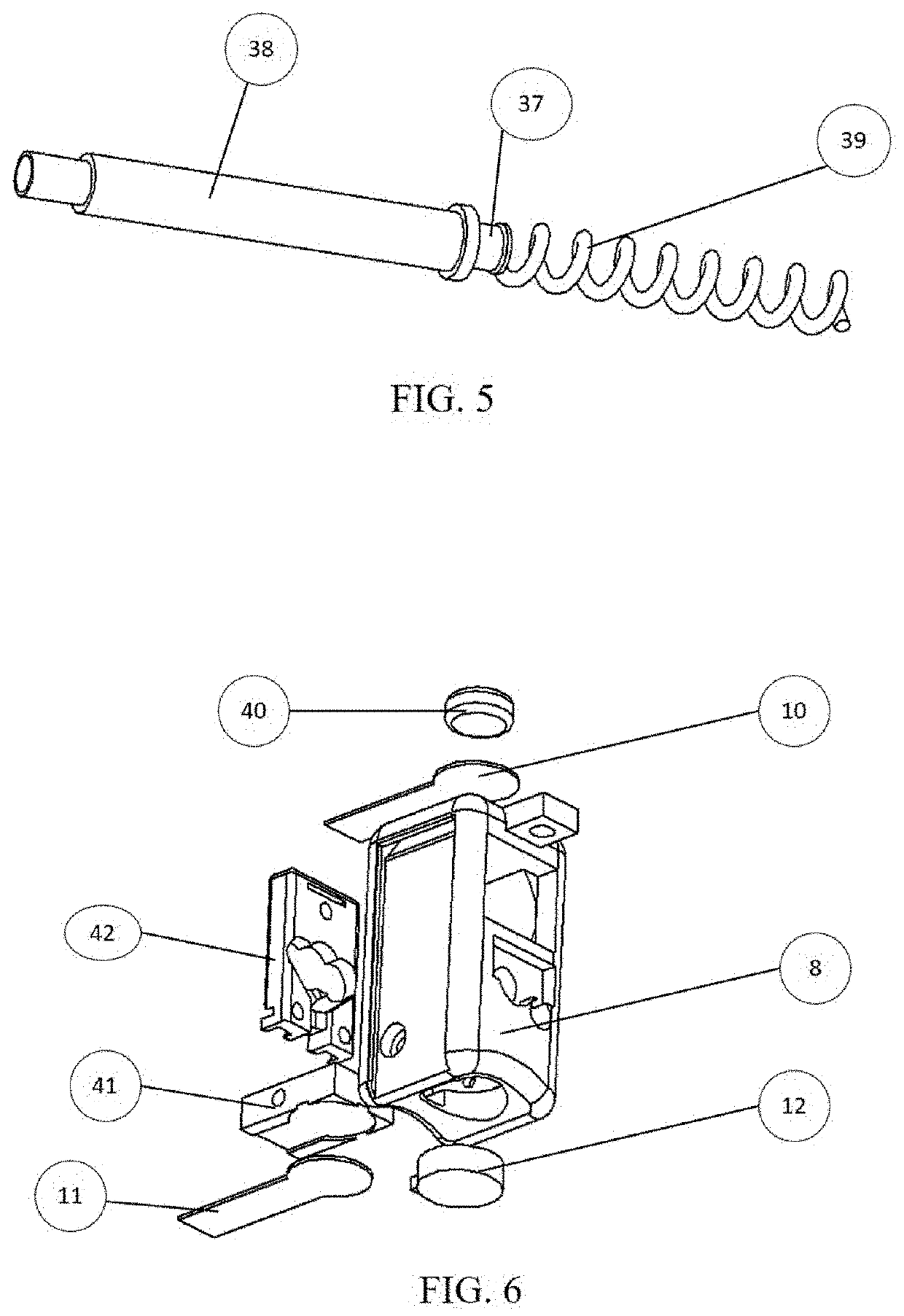Exoskeleton robot for motor rehabilitation of the hand and wrist
a technology of hand and wrist, which is applied in the field of hand and wrist motor rehabilitation exoskeletons, can solve the problems of not being able to relieve pain on patients during training, not being able to stimulate the mechanoreceptors of the hand joints, and not being able to differentiate between the different levels of hand rehabilitation devices, etc., to achieve high accuracy, precise system, and easy to use
- Summary
- Abstract
- Description
- Claims
- Application Information
AI Technical Summary
Benefits of technology
Problems solved by technology
Method used
Image
Examples
Embodiment Construction
[0100]We present a new innovative comprehensive mechatronics design of an exoskeleton robot for kinetic rehabilitation of the hand and wrist, which is placed on the patient's hand to provide the patient's movements independently. The system consists of five mechanical fingers (thumb, index, middle, ring, and pinky finger) where each of their movements (extension and flexion) are controlled by an electronic system designed to move the exoskeleton robot for the hand with many movements in different ways to serve rehabilitation.
[0101]The mechanical system contains 22 degrees of freedom represented by 4 degrees of freedom for each finger of the hand (pinky, ring, middle, index, and thumb), a degree of freedom for the wrist and a degree of freedom for the forearm in the case of fixing the other parts of the device. For all fingers, the first degree of freedom relates to the linear movement, the second degree of freedom is a rotational movement representing abduction or adduction, the thi...
PUM
 Login to View More
Login to View More Abstract
Description
Claims
Application Information
 Login to View More
Login to View More - R&D
- Intellectual Property
- Life Sciences
- Materials
- Tech Scout
- Unparalleled Data Quality
- Higher Quality Content
- 60% Fewer Hallucinations
Browse by: Latest US Patents, China's latest patents, Technical Efficacy Thesaurus, Application Domain, Technology Topic, Popular Technical Reports.
© 2025 PatSnap. All rights reserved.Legal|Privacy policy|Modern Slavery Act Transparency Statement|Sitemap|About US| Contact US: help@patsnap.com



